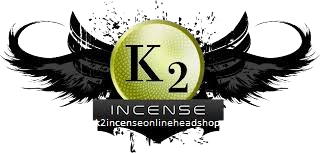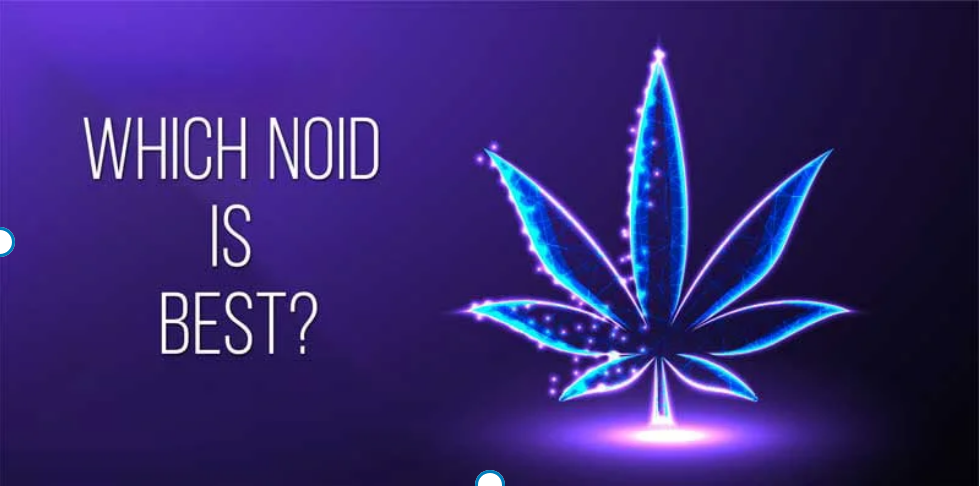herbal incense, liquide incense
Which noid is best?
Generally speaking, the older the noid the more its pharmacological properties have been studied and are understood as well as the more anecdotal evidence it is available for
its benefits, its safety, or its unusual dangers. That said, the older ones tend to come with legal risk due to many governments having identified them as potential drugs of abuse and adding
them to their anti-drug policies and laws.
Almost all synthetic cannabinoids are what are known as full agonists of the CB1 and/or CB2 receptors, the sole exception I have been able to find is EG-018, which remains uncommon in the grey and black markets.* A full agonist is, generally speaking, riskier than a partial agonist. This is why the naturally occurring cannabinoids in cannabis are generally considered safer than the synthetic cannabinoid class.
Which noids are the safest? The ones the various governments have banned on the behest of Uncle Sam’s war on drugs primarily. The ones present in cannabis plants or minimally altered like D8, D10, THC-O, and HHC* tend to be considered the safest. EG-018, being a partial agonist like its parent compounds, is often included on this list though is less studied than the
naturally occurring cannabinoids so may carry dangers we are unaware of. A partial agonist blocks a receptor for a full agonist as well as achieves lesser effects on the receptor than a full agonist so partial agonists are generally considered safer. In the synthetic cannabinoid/noid class the ever-present danger is that too high of a dose or becoming accustomed to a higher
dose and suddenly withdrawing will cause seizures and/or drug-induced psychosis making partial agonists preferable in most cases, especially when the full effects of the drug remain
somewhat unstudied.
Out of the Noid class itself, the older, well-studied ones like JWH-200, JWH-210, and JWH-073 are usually considered safer compared to the other less-researched cannabinoids.* The moronic bans enacted by China, the USA, and portions of the EU remain a significant roadblock to obtaining these safer noids and negatively impact the ability of Universities to study the effects of the newer noids which leaves a giant blind spot for users to stumble around in. This leaves us wholly dependent on anecdotal reports and the occasional experiment in mice or rats for the majority of our information on these substances.
Which noid is the most euphoric? In general, the older noids tend to be more euphoric as the newer ones tend to be considered too intense to be as enjoyable. JWH-210 has been popular with some users and has a decent safety profile when compared to other similar noids.** JWH- 073 has some positive trip reports that claim it can be rather euphoric, as it is one of the older and more studied compounds it may be safer than some of the newer, less understood noids currently on the market. * 5F-MDMB received at least one positive trip report, though it remains fairly unexplored in the literature,* it’s causing MDMB-4en-PINACA was reported to have some euphoric properties as well.* Again, given the older ones are now illegal in most countries this has created a dangerous situation for noid enthusiasts as they have to select from a much longer list of unknown drugs with unknown side effects and metabolic products, many of which are reported to be quite toxic.
What is the most sedating noid? No clear consensus has been reached on which is the most sedating, some users reported that 5cl-ABD-a was somewhat sedating but its risks and side effects remain relatively unexplored making it risky to experiment with.* What noid lasts the longest? The first thing to consider is that lasting longer isn’t
inherently a good thing. As many of us who have taken mescaline or higher doses of LSD-25 can attest to, your brain gets rather tired and worn out after a very long trip. As much fun as the
peak is trying to extend it longer can exhaust your ability to cope and more frequently leads to periods of psychosis, which can lead to long-term psychosis for those predisposed to it. 4F-ADB
is reported to last between 16-24 hours,* as one would expect with a longer trip though this drug is more frequently associated with psychotic symptoms than most other cannabinoids, even at
low doses.* In general, oral dosing lasts longer than vaporizing, though comes with increased risk as the metabolic side effects have not been studied and it opens up a large risk of double dosing if the user either forgets they took it or thinks they have the inadequate amount and takes a second dose due to the long period between taking the drug orally and the peak of its effects through this route.
What is the best of the newer noids? The few psychonauts who have been brave enough to experiment with the new unknown substances seem to like CBM-151*, though being a newer cannabinoid its effects remain unstudied. All we have to rely on is a few anecdotal reports of users who enjoyed the substance without reporting side effects. It always remains possible that the users who had negative experiences didn’t post about their negative experiences so the jury is out on how reliable or safe this substance is. What noids are the most common? For the latter part of 2021 MDMB-4en-PINACA is the most popular/common, ADB-BINACA, 5F-MDMB-PICA, 4F-MDMB-BICA, 4F-ABINACA, 4F-MDMB-BINACA, ADB-4-en-PINACA, ADB-HEXINACA were the most common in the United
States, in that order.* The most common, MDMB-4en-PINACA was first encountered around 2019 in the USA but has quickly become the most popular cannabinoid as of 2021. It is active at as low as 1mg/mL* and a high dose is only 30mg/mL making this one of the more potent noids. It has some dissociative properties commonly compared to ketamine but is more commonly thought to cause panic attacks than dissociation. It can also be quite addictive with severe withdrawals which can include seizures and drug-induced psychosis from trying to come off of regular use cold turkey. Seizures and drug-induced psychosis are also the symptoms of excessively high doses with noids in general but particularly with the more potent forms. New noids such as 7ADD, 7ADB, AD-18, and, 5F-18 have recently made their way to the market as a way for Chinese producers to skirt around the Chinese synthetic cannabinoid ban that went into effect a few months ago as discussed in my previous article. These drugs are almost completely unstudied and have little to no anecdotal reports from users available. This makes it almost impossible to determine their potency, effects, and side effects so remains exceptionally dangerous for would-be-psychonauts wanting to explore their effects without dangerous personal experimentation. The general rule of thumb of beginning with 1/10th the threshold dose of the most potent related compound may not work if these are unusually potent drugs.
This trend towards more potent noids with more intense effects is a direct result of the war on drugs. Just like how prohibition leads to the further development of hard liquors in favor of beers and wines due to their concentration making them easier to hide from law enforcement we see this same trend carried out with drugs as they are banned. Opium was commonly dosed from 200-300mg but fentanyl only takes 20-50 micrograms for an effective dose. Making a drug illegal is an almost surefire way to increase the potency, and hence the overdoses, of drugs available on the black market. The more potent the drug, the less of it has to be concealed in a shipment, and the less likely it will be discovered by law enforcement. The ideas contained in this article belong to Matthew McLeod and do not necessarily reflect the views of the owners and employees of FlightAMS.
Matthew McLeod is a Métis-Canadian author writing about all things psychonaut and BDSM. He is also the author of a Canadian Hippy’s Guide to Cannabis. Matt has been researching altered states of consciousness for the past 15 years, writing on the subject full-time for the last 5 years. The flames of his curiosity began while running a local BDSM group and encountered those entering subspace in the mid-2000s. His research expanded to include tryptamines and cannabinoids around 2015 when a firefighting-related injury pushed him to explore alternatives to opioids for pain management and recovery from PTSD. Matt lives and works out of Vancouver Island, Canada, and spends his weekends riding horses and running events for the local BDSM community.


